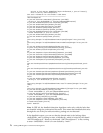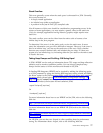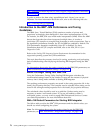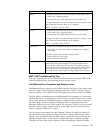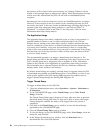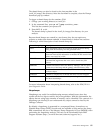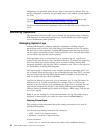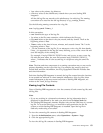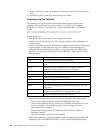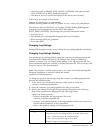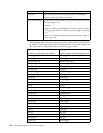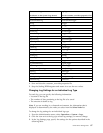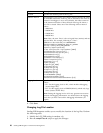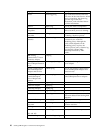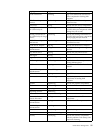
1. In the install_dir/logs/log directory, locate the old log file that you want to
view.
2. Open the log file in read-only mode using a text editor.
Analyzing Log File Contents
The contents of a log file provide information about system activities and
problems. The format used for entries written to a log file is [YYYY-MM-DD
HH:MM:SS.ss] loglevel ‘message code' Scope.Subsystem.Name ‘information
string'
[2008-04-22 09:02:43.404] ERROR 000310160001 UTIL.FRAME_POOL.ERR_Pool [Pool] Could not create the initial objects for the pool gentranTPPool
[2008-04-22 09:02:43.405] ERROR 000000000000 GLOBAL_SCOPE [1208869363405] The driver manager could not obtain a database connection.
In this convention:
v YYYY-MM-DD refers to the date in year, month, day format.
v HH:MM:SS.ss refers to the time in hour, minutes, seconds, and hundredths of a
second format.
v loglevel indicates how much information is logged and the relative importance
of the message. A subsystem may log only a subset of these messages (as
defined in the subsystem.loglevel property of log.properties), discarding those
that have a severity that is lower (less severe) than the current log level set for
that subsystem.
Log Level Description
FATAL Collects fatal and critical error information.
ERRORDTL Collects only error conditions, with a detailed description of the
error.
ERROR Collects only error conditions such as exceptions and error
messages (including errors from the user interface).
WARN Collects non-fatal configuration messages.
SQLDEBUG Collects SQL statements that are being executed.
INFO Collects basic operational information.
TIMER Collects timing information.
COMMTRACE Collects communication trace information.
DEBUG Collects basic debugging statements including system state and
code paths.
VERBOSE Collects extra debugging statements (like XML information) that
describe and explain what is happening in the system.
ALL Collects information about all the conditions.
v message code describes the activity or problem, using the following format:
– The first four digits specify the scope (like Workflow, Ops, Util).
– The next digit specifies the log severity level (default conventions use 1 for
error or exception, 2 for debug messages, 3 for warnings, and 4 for
information or all messages.
– The next three digits specify the subsystem (like Workflow Queue or
Workflow Engine).
– The last four digits specify the error number.
v Scope.Subsystem.Name is a text description of the affected part of Sterling B2B
Integrator (such as WORKFLOW, OPS, or UTIL), the Sterling B2B Integrator
84 Sterling B2B Integrator: Performance Management



